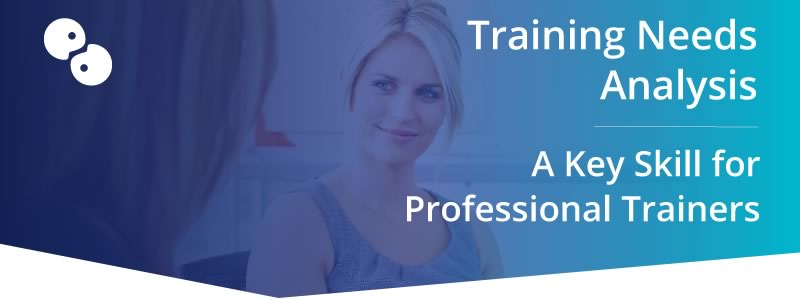Training Needs Analysis Benefits: Why is TNA so important?
When you think of the role of a trainer, it’s quite likely that an image of someone standing in front of a room, delivering a training session springs to mind.
It’s true that delivery skills are a huge part of a good trainer’s skill-set. However, before you even get close to firing up the PowerPoint slides, you’ll need the ability to identify training needs accurately using a Training Needs Analysis (TNA). Training Needs Analysis is also known as "Learning Needs Analysis".
In this article, we’re going to look at the purpose of a TNA, benefits of conducting a TNA, and give you guidance on how to develop strong TNA skills, achieving a recognised certification in this area.

Get an Instant Overview
You can get access to information about our Training Needs Identification and Design Course by instantly downloading our PDF brochure.
In This Article:
What is a training needs analysis?
Training needs analysis (or TNA) is the process undertaken by a training or HR professional to identify the gaps in knowledge, skills, and sometimes attitudes of a group of intended trainees.
It is the first of 4 stages that comprise the Training Cycle.

What is the purpose of a TNA?
The TNA is carried out in order to design effective training that will close these gaps.
Without a correctly executed TNA, trainees may receive a generic, off-the-shelf programme that might not address their needs.
TNA Benefits

Benefits of Training Needs Analysis
1. Clear Expectations
Through the process of carrying out a TNA, both the trainer and client have an opportunity to communicate about what is required from the training, and what is achievable.
This eliminates the risk of any misunderstanding about the purpose and goals of training.


2. Trainer is Prepared
Understanding what the trainees need, and having the chance to set objectives for your training programme is also beneficial to the trainer.
They use this information to design the right kind of content for the course, and to prepare for the style of training that will have achieve the desired results.
3. Higher Impact of Training
Training content relevant to the trainee’s working environment and challenges will make a lot more sense than vague, generalised examples.
Likewise, focusing on areas where the gaps are greatest, rather than following a prescribed set of modules will increase both the engagement and knowledge retention of the trainees.


4. Increased Enthusiasm and Morale
If you attend training that addresses areas you are struggling with, and provides you with the skills and solutions to overcome these challenges, you’ll leave feeling motivated to put those skills into action. An accurate TNA enables trainers to create training that delivers on this front.
5. Client’s Needs are Met
For example, if a client contacts you to schedule a team-building session, they want to know that at the end of this investment of time and capital, the team will be on the way to strengthened and improved morale and relationships. Using a TNA to outline these expectations at the start of the process is the foundation for achieving this goal.





